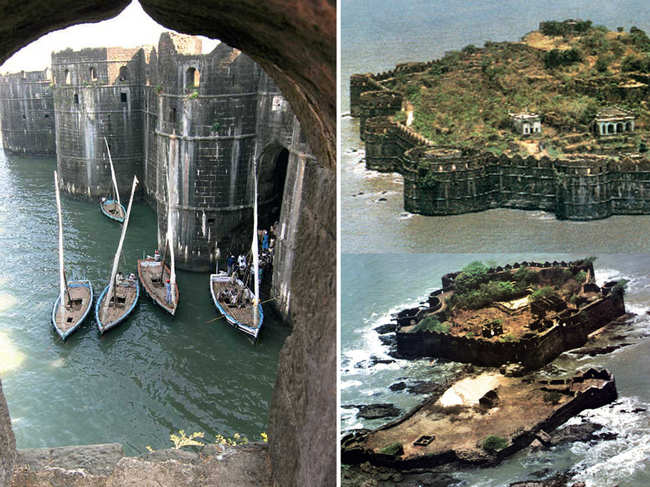 Agencies
AgenciesThe fort of Murud Janjira stands testimony to tell tales of the small yet powerful citadel of the Siddis. Fortified to the teeth, the structure could never be conquered by the Marathas, the Portuguese, or the British; in spite of their numerous attempts. Learning their lessons early on, the Marathas formulated and enhanced their maritime policies. To counter the offensive, they built a smaller sea fort called Padmadurg (also known as Kasa); one of the five historical sea forts constructed during the reign of Chhatrapati Shivaji Maharaj.
THE INVINCIBLE MURUD - JANJIRA
The sea fort at Murud-Janjira is one of the most unique and beautiful forts in India. Situated in Raigad district of Maharashtra, it is surrounded by the Arabian sea on all sides. The fort is only accessible by sail boats and ferry services from the coastal village of Murud.
 Agencies
AgenciesThe erected structure has 22 massive bastions and high protective walls and ramparts with massive black granite walls that seem to be standing right on the water. Being the capital of the Siddis, Janjira was once inhabited by a large number of people. Their descendants still live in and around the coastal village of Murud. The fort and its buildings lacks architectural ornamentation. Yet, the sheer beauty of this fort lies in the clever military designs that the architects used making the fort almost impregnable.
The main buildings inside the fort includes the royal palace. There are various other buildings such as mosques, houses of noblemen, stables, granaries, along with underground passages. Many of these buildings are interconnected. There are large fresh water tanks that helped the inhabitants survive, without having to leave the fort for years at a stretch.
The Siddis strengthened the fort largely by adding a number of heavy cannons. According to historian B. K. Apte, “The European guns of Swedish, Spanish, Dutch and French make bear witnesses to the Siddis’ dependence on foreigners for guns of good calibre.”
Today, one can witness a few of the large cannons that continue to remain in place, along with the largest cannon — the infamous Kallal Bangdi.
PADMADURG FORT -A FOIL FOR THE SIDDIS
Padmadurg was built on the low-lying Kamsa rock jutting out from the sea which is situated only 10 kilometers from Janjira. But the fort couldn't serve the purpose for which it was built. The Deccan was a hotbed of renewed politics after the death of Chhatrapati Shivaji Maharaj and the Maratha administration dwindled. Eventually, Padmadurg's fate was sealed when it fell into the hands of the Siddis.
 Agencies
AgenciesThe shape of the fort resembles an open lotus, also known as Padma, substantiating its etymological significance. Numerous sculptures and motifs of the lotuses can be seen inside the fortress too. The engineering and technical skills of the Marathas is marvelled with regards to the transportation of materials across the sea to build this fort. The fort contained 70 to 80 cannons in the past and now only 42 remain some of which have rusted due to the humid climate conditions.
The essence of Chhatrapati Shivaji Maharaj’s maritime vision was encapsulated by the words “Jalameva Yasya Balameva Tasya” (meaning: He who rules over the seas is all powerful). With his far-sight and vision, he could sense the importance of establishing control and supremacy in the seas which his contemporaries lacked. These forts, like many others, were abandoned towards the beginning of the twentieth century. Lack of modern amenities, dwindling fresh water reserves and rising fiscal problems made the inhabitants of Janjira move to nearby coastal villages to look for employment. The Padmadurg fort lies desolate, lonely and abandoned, while Murud-Janjira is a popular tourist attraction for weekend getaways. The conservation and repair works have restored its heritage value, making it worth a visit.
This article is brought to you as a part of Indian Navy and Times Group initiative. Contributed by Janhavi Lokegaonkar & Priyanka Choudhury on behalf of the Maritime History Society.















 Get Unlimited Access to The Economic Times
Get Unlimited Access to The Economic Times
